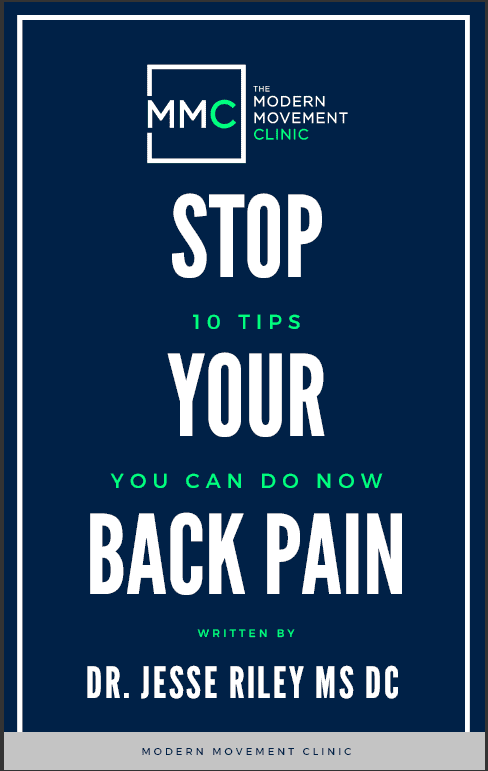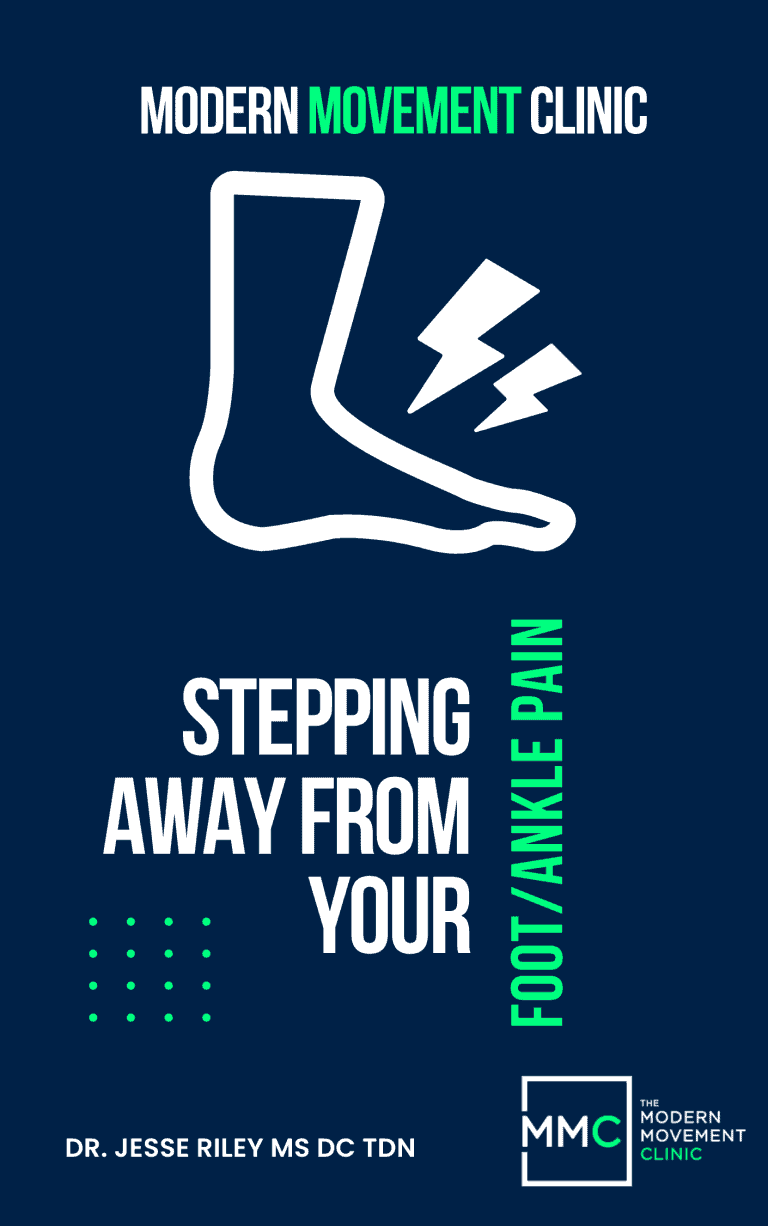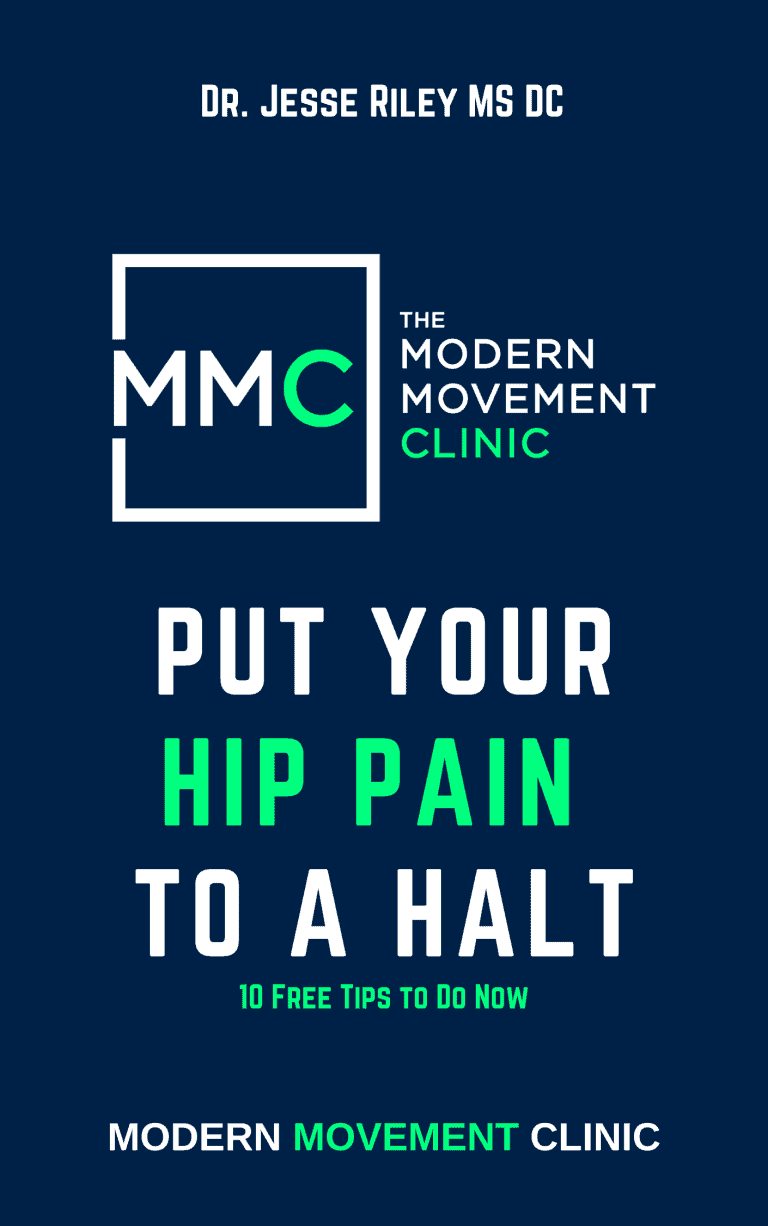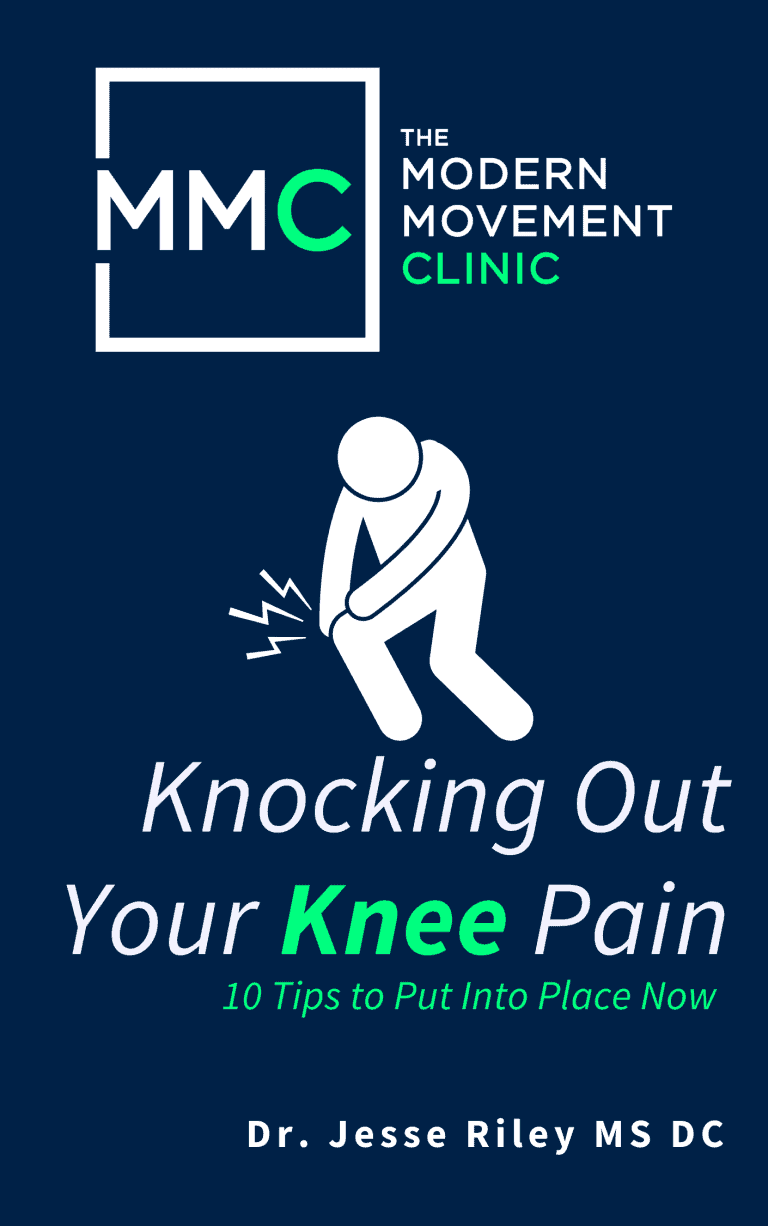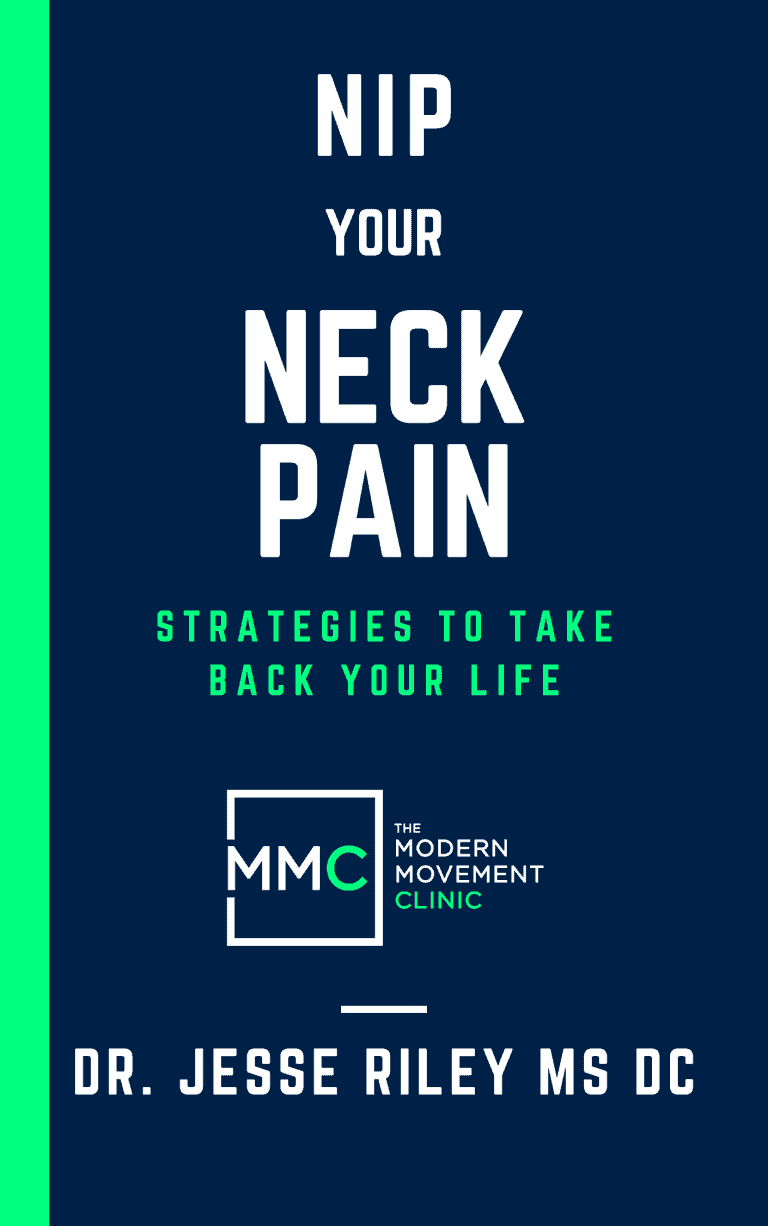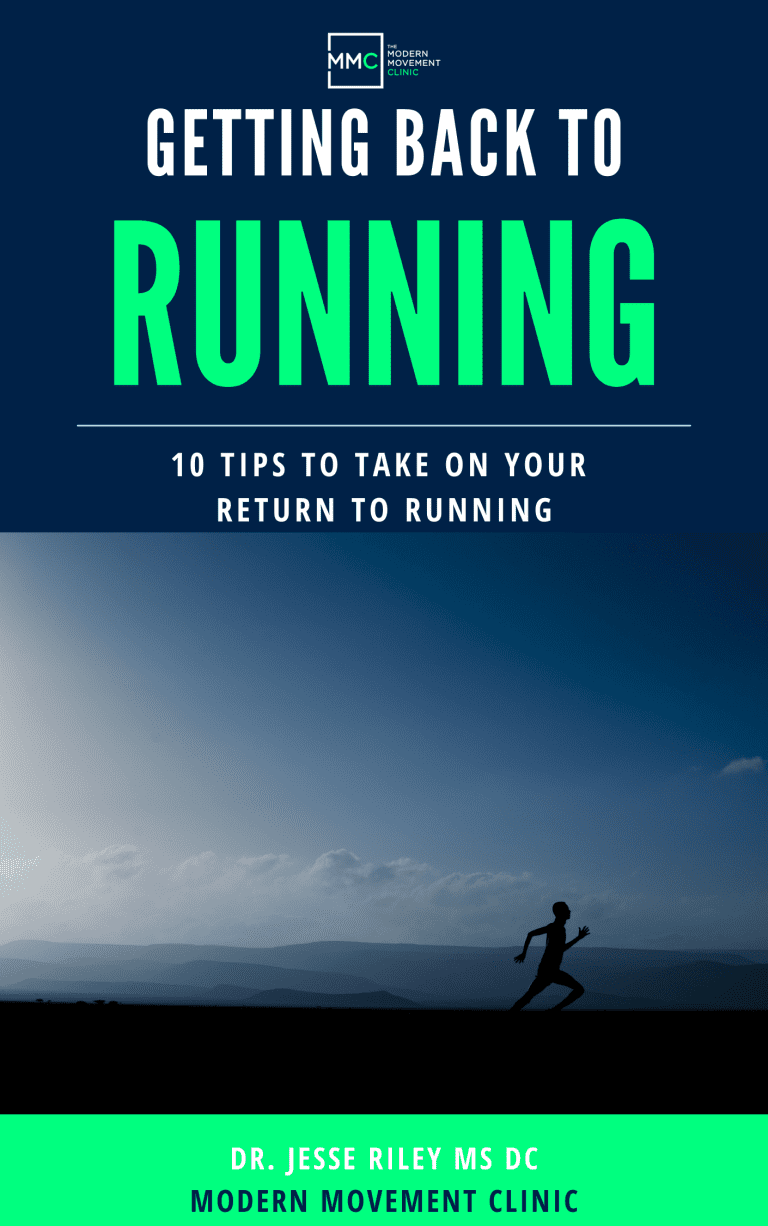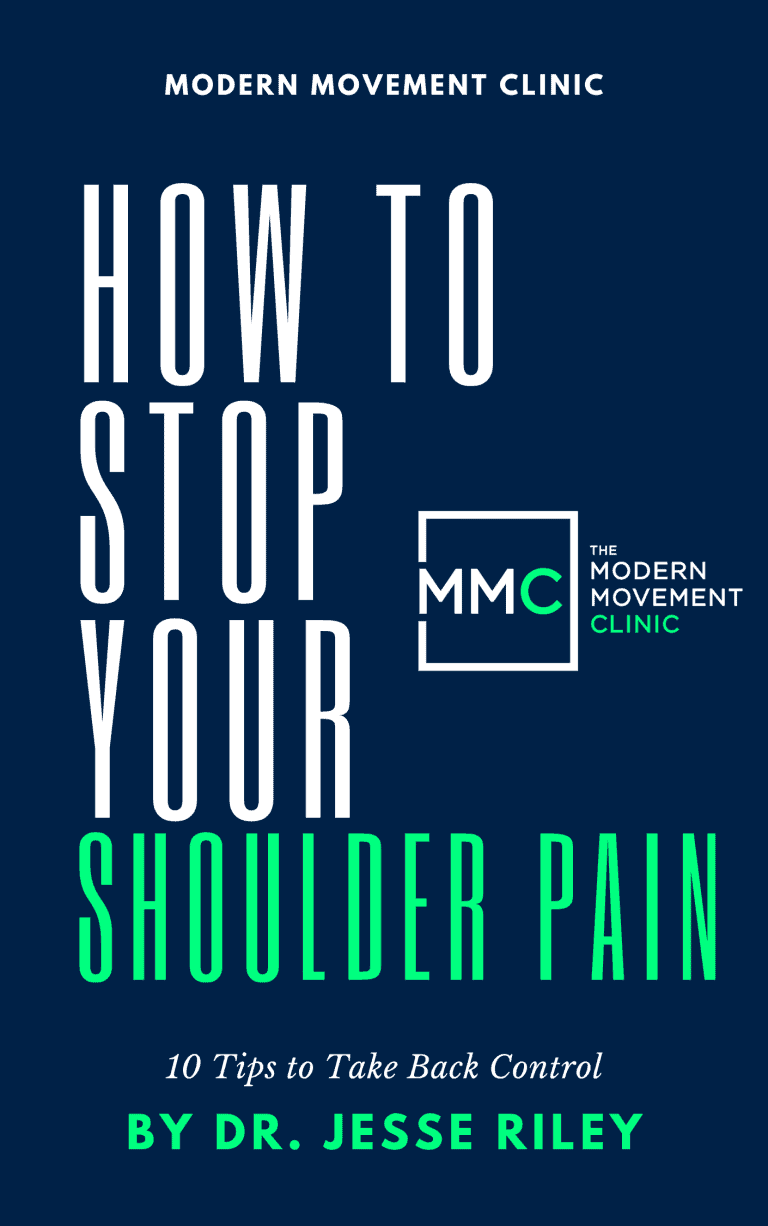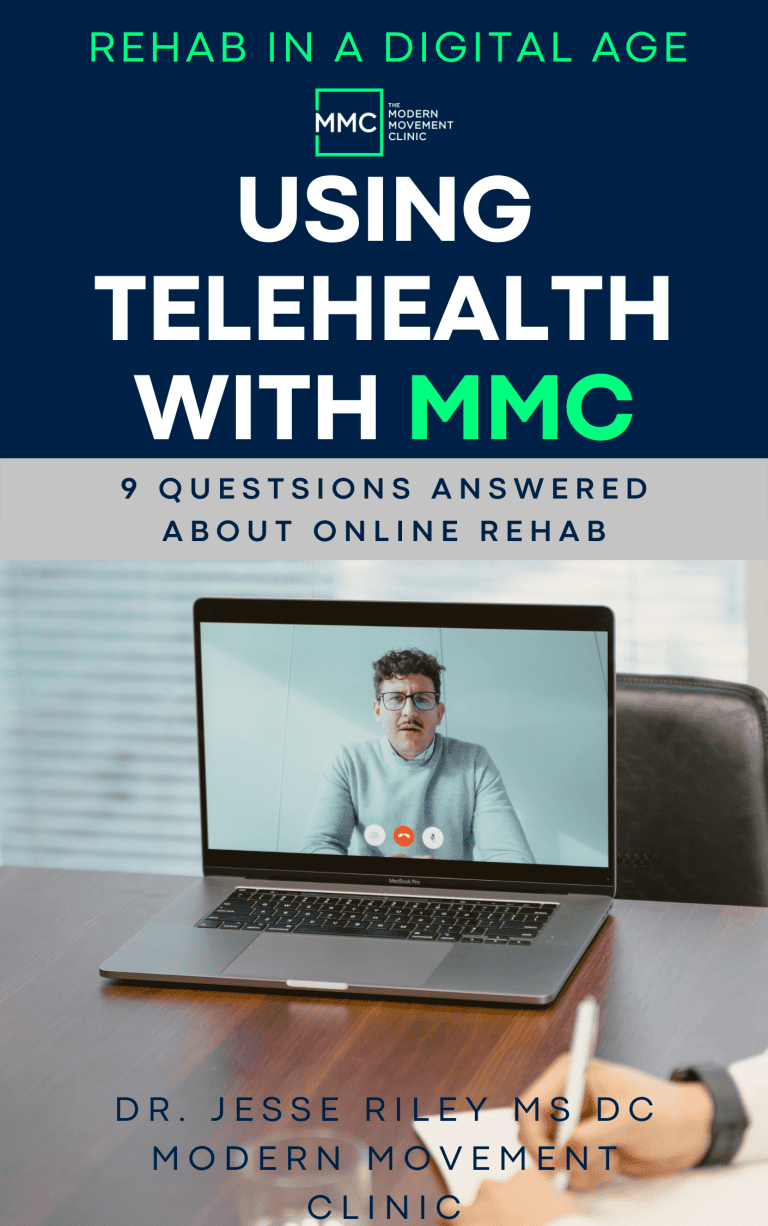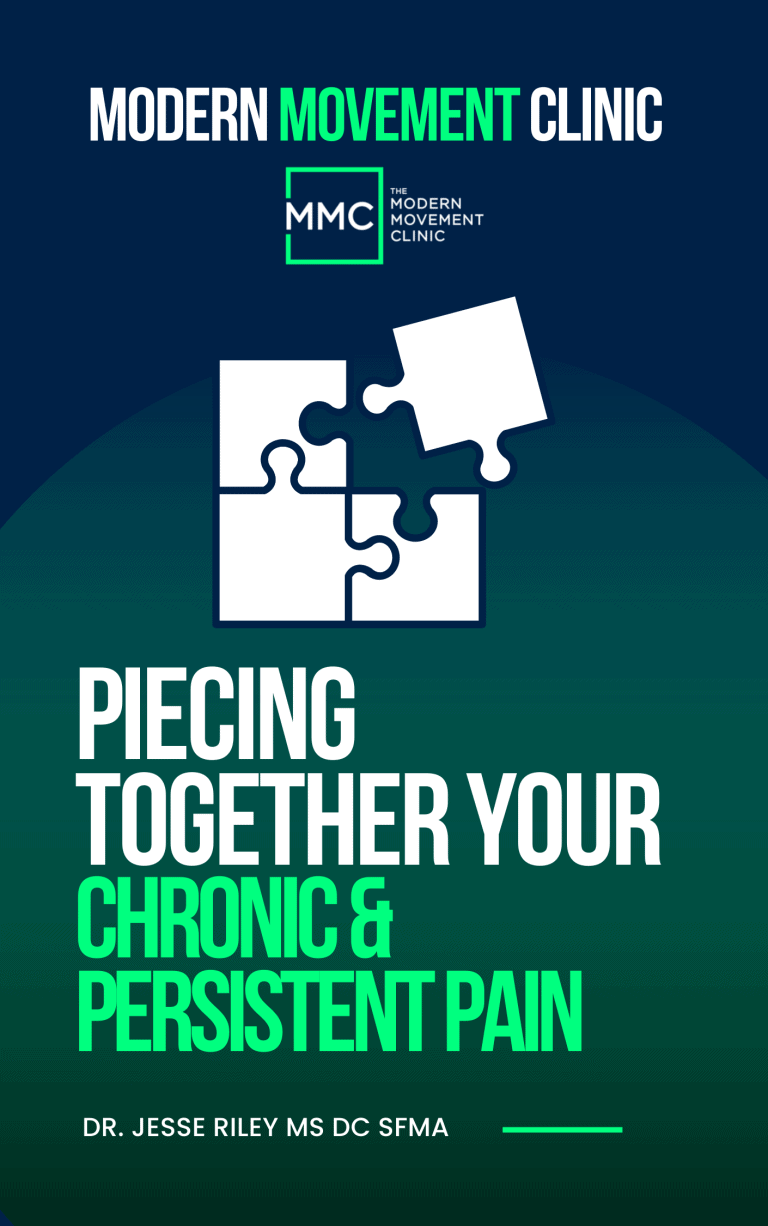Common Conditions
Services Offered
At Modern Movement Clinic, we know you’re unique and we wouldn’t have it any other way. That’s why each session is specifically catered towards you. Even if you have the same “injury” as your buddy did last year, this doesn’t ensure the same things will help. We all have different levels of activity, schedules, stress levels, and wants and needs. We offer a wide range of therapies and strength programming to meet your needs.
After your first visit, your Doctor will create a specific treatment plan for you and using many of the therapies below:
The examination is highly detailed and using video allows us to slow down the movement to get the full story and answers. This is done with live and virtual appointments as this allows us to go through your function together and how this may or may not have relevance to your complaints.
A thorough examination through video analysis allows for a concise and progressive rehabilitation and exercise plan. Your specific exercise plan will be catered to work on what we find causing your complaints along with moving you towards meeting your goals.
During the appointments at the clinic, there are many other tools that can be used to modify the pain you may experience. There’s many forms that are coming to light like the use of cupping, specific taping, vibration or percussive guns, tools or instruments and traditional hands on or massage. Many try to separate these but the function is all similar, some just respond better to some over others.
What is it?
Using the strategies and mentality of Motion Palpation Institute, we use biomechanics and movement to address areas that may need mobilization. This is used by many evidence based chiropractors as opposed to using terms like “subluxation” and “bone out of place”.
Why do we use it?
We use this to treat joint areas that feel immobile based on examination. This ensures the safety and application of the adjustment so that there is no question that this area needs mobilization. We put the body in a safe position and apply a quick, specific push or pull. This can at times help with pain mitigation as well.
How does it work for me?
Like mentioned before, adjustments CAN have a pain mitigating effect, as well as, giving us a window of time to help increase mobility with active exercise. This is not for everyone and will be openly discussed with the Doctor. We often use this for neck, mid back, and low back pain along with sometimes increasing mobility at the ankle and other joints.
What is it?
Soft tissue therapy encompasses a few different styles of working around the soft tissue areas that can be stiff and tense from the nervous system. Many people claim this changes areas of scar tissue but most evidence shows this is not the case. When muscles or other tissues become over-stressed or injured, they can become sensitive through the nervous system trying to protect that area. We use these soft tissue techniques to help modulate the pain in the area to a lower level that allows us to implement strength exercises.
Why do we use it?
Using a few different ways at Modern Movement Clinic, we use ART (Active Release Technique) as a means of applying light compression over the area of tension and applying a small stretch through a range of motion to help work through possible range of motion that are painful. We also use a technique called IASTM (also known as Graston) that stands for Instrument Assisted Soft Tissue Mobilization. Here we use a tool to work through superficial
pain receptors applying motion with the tool to areas that are painful to again allow for increases in mobility and pain mitigation. Lastly, we use other tools like percussive therapy with a vibration gun and flossing bands that wrap around a joint area to help increase range of motion.
How does it work for me?
Everyone has a different reaction to all therapies, some people may actually become more tight after manual (with the hands) soft tissue or adjustments. Having a wide variety of ways to get the nervous system to calm down is vital in helping EVERY client move forward with progress. This can be discovered through the examination process.
What is it?
This is a western medicine based interpretation of acupuncture where we use small filament needles to create a twitch response (think of it like when the Doctor taps your knee at the Doctor’s office). The needles are very thin and therefore, rarely, if ever, is there any blood because the needle is thin enough to pass through the skin as opposed to puncturing it like with a blood draw or your COVID vaccine.
Why do we use it?
Much like the Soft Tissue Treatments and Chiropractic Adjustments or Manipulation, this is used for pain mitigation. Chances are if you’ve had success with this in the past, you’ll likely see benefit now. This gives us a window of time to work through ranges of motion that may have been painful prior to but can now be loaded into with strength and rehab exercise. How cool! We can use this for headaches, low back or neck pain, hip pain, running injuries, and just about anything you can think of with musculoskeletal pain.
How does it work for me?
As with some of the other passive therapies (this is what Soft Tissue & Manipulation are meaning done TO you), some nervous systems do NOT do well with dry needling and become more tense. The intent is to obviously do the opposite. Like mentioned above, you will know this from past experience or through examination. The goal of dry needling is simply to calm down the nervous system to allow us to open up ranges of motion and regulate your nervous system.
What is it?
This is the use of patches or during Dry Needling with having a controllable and mild electric current that is applied around the area of pain. This is considered part of the passive therapy regimen.
Why do we use it?
Pain mitigation comes in so many different forms and ways, and this is simply another passive therapy we have available to us at Modern Movement Clinic to help reduce pain and get us to moving much more!
How does it work for me?
Like we’ve mentioned above, some people just respond better to different ways of treatment. Some people find this much more calming to use pads if they have a aversion to needles. The pulse that you experience feels much like a thumping or heart beat sensation. We leave this going for a few minutes as this can help reduce some pain sensations and allow us to get into some active therapy.
What is it?
Think of Neuromobilization as a particular performed movement or motion that allows the nerves of an area to feel a little more mobile and bring about pain modification in regards to work with the nerves exclusively. We do these repetitively over the course of time while also modifying some behaviors that may elicit this response from the nervous system and you guessed it, doing active exercise.
Why do we use it?
Sometimes our nervous system likes to talk to other areas around a source of pain. Things like carpal tunnel syndrome, tarsal tunnel syndrome, and other nerve entrapment issues that range from numbness/tingling or shooting type pains into the hands, feet, and various parts of the extremities can benefit from neuromobilization.
How does it work for me?
Depending on how the nervous system likes this technique, we often use this in things like sciatica or those mentioned above to help alleviate the numbness/tingling. This is a great adjunct with strength training and has been shown to alleviate symptoms much faster than rest alone.
What is it?
Strength and conditioning programming is a highly valuable too to increase your strength and has been shown to help avoid injury whether for sport of life in general. Using our assessments, we put together a specific program that focuses on your needs from a personal level and biomechanical level to help get you to reach your goals.
Why do we use it?
Because we don’t do much good sitting on the Injured List. We use our knowledge base of movement, the motions and actions of your sport, and principles of strength to help increase your capacity for work. This helps you stay in the game, match, or race and perform at the standard that your mind knows you can.
How does it work for me?
This isn’t just 3 sets of 10. We know not just what lifts and movements are good, we also personalize this program to YOU. Perhaps your goal is increasing your mobility or maybe focusing on some prior areas you’ve had problems with. This is all about getting acquainted with picking up weight, moving in multiple planes, and training for your sport that benefit you and your goals. Can’t go wrong with getting strong.
What is it?
Ask yourself…do you want to get better faster? We want you to also and no better way to do that than to do some Active Therapy (this is what any exercise is referred to as YOU are the one doing the work). Our Movement Specialists take what we learned from your initial and even follow up examinations to give you a specifically designed exercise protocol based on your needs, limitations, and sport. We often combine these with the passive therapies above.
Why do we use it?
I think we all want to be better faster right? We’re not sure we need to belabor this point. We use active therapy and rehab exercise to provide you with tangible strategies you can use not just now but in the future should recurrence ever happen. Research actually shows that patients improve faster and have a much better outlook on themselves and their pain. Why you ask? A term called self-efficacy. We could do the project for you but what would you learn out of that? Active therapy allows you to feel more in control of your life and therefore lends itself to creating LESS chaos in your mind and MORE long lasting effects for the better with you and your health.
How does it work for me?
Think of this as your personal, catered specifically to you, “we’re doing this for me and MY needs” plan. Strength and exercise has no negative effects for anyone. We give you a progressive program (think starting at addition and subtraction and moving towards algebra and calculus) that focuses on the specific areas we find during the examination.
What is it?
Glute medius tendinopathy, IT band Syndrome, Proximal Hamstring tendinopathy, Patellofemoral Pain Syndrome, Posterior Tibial Tendinopathy, Plantar Fasciitis…if you’re a runner you’ve heard of these or may have even dealt with some of these. At Modern Movement Clinic, running is a specialty of ours and no better way to make sense of how the pain started than to watch the activity you do the most. The funny part of a lot of other clinics is they advertise this elaborate tool that measures 2700 different things in your running but when it comes down to tangible things to apply to your run, there’s not a tool for that. With our vast experience and education, we just need a treadmill, an iPad, and our senses to be able to give you the answers you need. Goes to show that you don’t need the biggest boat out on the lake when all we are doing is fishing. (Dr. Jesse came up with that one)
Why do we use it?
Simply put. We use our analysis to try to keep you running. The last thing we tell people is commonly to stop running all together. If we can keep you running in some capacity, we try to do it based off of what we find on your running analysis. Our analysis commonly tells us the story of WHY this pain is present. Maybe you just want to have form checked and there is no pain at all. Great! We can give you some clues to where you should focus your efforts on strength and strategies for running to either work on mitigating pain or increasing performance. We do it all. Confidently. So much we keep talking and slam the period button. (Imagine us mimicking a fadeaway and yelling “Kobe!” here)
How does it work for me?
We know that many times you’re told “you need to stop running” or “running is bad for you”. We think it’s all a bunch of small minded you know what’s that don’t know how to work with you. At Modern Movement Clinic, you’re damn sure doing something here! You may have to be on the bike or brisk walking for a bit or perhaps it’s a walk:run ratio for time, or maybe you can run we just need to do it in certain environments or techniques with lowering efforts or modifying cadence. We want you to keep running if we can help it! That way you’re happy and because you’re happy, we’re happy.
What is it?
This isn’t your typical physical you get at your primary care facility. This is a systematic biomechanical assessment for your sport that allows you to identify where you should focus your training efforts in strength and injury prevention, whether that’s working with us at Modern Movement Clinic or somewhere else.
Why do we use it?
Think of it as your readiness for your season. Often times we enter a season under trained and under prepared and with that we often see injuries more on the initial part of the start of the season. We at Modern Movement Clinic don’t want you to play catch up but more be the leader of the pack. We use our knowledge of biomechanics and how that relates to your sport to assess you and address them in the training room.
How does it work for me?
We work with a lot of athletes (I mean we’re in Colorado so it’s part of the gig) but also pride ourselves on our knowledge base of how the body moves. We know everyone’s body is different and has different needs. Think of this as your own PERSONAL, personal trainer. We work ahead of your season and sometimes even during your season to work through areas that may be more vulnerable to make them your Ace in your hand so that by the time that first gun goes off at your race, you’re smiling ear to ear.
Client Testimonials
-
I am so excited to have found Dr.Jesse..he takes an innovative approach to rehabilitation and is very creative in the ways he teaches your body to heal itself. He's personable... Read More and very one on one in his approach,customizing your rehab to your own needs..he also does dry needling, which has helped me tremendously..five stars!
Linda Pettit
Dr. Jesse has been great and I highly recommend him! I was referred to him by my personal trainer to address some of my limitations/struggles.
Here are some things about him... Read More and his practice ...
- Genuinely listens to you!
- Addresses the issue and focuses on it.
- Asks what YOU want, not what he thinks you need.
- Helped me figure out how to reduce my limitations / struggles. I've seen improvement in my mobility and increase in strength. I no longer feel STUCK! :o)
- Great sense of humor!Kristie Lukowicz
Dr Jesse Riley has been a tremendous help to me over the past few years and I highly recommend him to any athlete struggling with injuries big or small or... Read More looking to accomplish big things.
I am a chronically injured ultra-runner who has struggled with a myriad of overuse injuries through the years. I was referred to Jesse by my running coach to work on some chronic knee pain and a hamstring injury. I've gone to many PTs and have never had great results so I was very skeptical that he would be able to help. From my first visit, it was clear that Jesse was different than any other PT I'd visited before. He spent so much time just listening to my history with pain and actually used the information I shared to create a custom treatment plan. For the first time, I felt like my PT was actually invested in my results and wanted to see me succeed. With his help, I was able to complete the Leadville 100 Trail Run and now I have my sights on my first 200 mile race! Happy to have Jesse on my team to help see me over the finish line healthy and happy.melanie white
-
Jesse is an incredible PT and Chiro. I started seeing Jesse back in Sept 2021 for a torn muscle in my hip, and we also decided to work on a... Read More ton of other issues I have been having with my ankle, toe, and back. Since starting with Jesse, my injury has become almost completely rehabilitated and my strength and stamina has returned. He is very consultative and knows when to push you and when to tell you to hold up. My progression and overall health and strength is back to where I was before the injury. I am able to do all the activities that I previously did with no pain at all! I cannot recommend anybody higher than Jesse.
Joey Betori
I had a chronic pain in my shoulder and collarbone for 3 or 4 years, maybe more. I didn’t think anything could be done about it. I didn’t... Read More know much about physical therapists and what was possible. I started thinking, this is what getting old is like. Aches and pains are going to develop, and you’ll just have to live with it.
The pain in my shoulder developed over time, it wasn’t severe. It didn’t stop me from being active, (I like to run, work-out, ski, hike, etc.) but it was a constant nuisance. Always there, causing discomfort, sometimes real pain – maybe I slept on it the wrong way that night, it would bother me all the next day.
Before starting treatment with Dr. Jesse, I think I spent a lot of time worrying. Worrying that I’d have the pain forever, that it would get worse over time, and other new pains were going to develop.
I tried massage therapy. It didn’t work. In fact, after getting a massage, my shoulder tended to hurt more for the next day or two, returning to normal pain levels after that.
Since coming to see Dr. Jesse, I am living pain free. For that, I am so grateful. Just as important, I’m not worrying anymore. I feel like any future issues can be managed and solved. In fact, that happened too - once my shoulder issue was resolved, I asked for help with two separate issues related to pain in my feet. Dr Jesse solved both! I was amazed.
Obviously, resolving my issues is what mattered most. But what I really appreciated was the mindset Dr. Jesse had about running, in particular. I have always heard that you have to give up running when you get older. Dr. Jesse’s attitude was the opposite, he said with confidence, “We will get you back out there running, pain free!”
To be honest, I was skeptical. But he was right. I don’t have to give up running or being active. And I don’t have to accept chronic pain for the rest of my life.Chris Triolo
I have nothing but praise and gratitude for Jesse! I had been experiencing back pain for over a year. Having seen multiple practitioners, medical doctors and trying every holistic approach... Read More I could find, I was exhausted and had all but given up. My life had been altered by pain in a way that I couldn’t have imagined. I felt like my life energy was draining. Then one evening, feeling that I just couldn’t give up, I started an online search and found his site. He called me the next day and I went to see him.
He listened, talked with me, educated me about what was happening in my body and we went to work. In just a few short weeks my pain is almost gone and I feel like I am returning to myself again. I have mobility to do things without pain that I haven’t done in months, like getting out of bed! I will continue this journey with him over the next couple of months to build up my strength and develop new routines to ensure my back health; solutions that with his care and knowledge will allow me to live my life normally again. My endless gratitude to you Jesse! Thank you for your help and compassion!Lisa Fowler
-
Dr. Jesse Riley is not your typical chiropractor in the best way. He treats holistically by identifying the route cause of the issue. He incorporates strength training into treatment. It... Read More is obvious when working with him, that he wants you to move better and with less discomfort.
Dr. Riley has helped me with a strange foot numbness and lateral knee pain that occurs when running. He is creative with treatment and problem solving. Best of all, he is an all around good human, fun to work with, and wants the best for his patients.Hillary Osborne
I came in with a lot of hip pain, after trying several other physical therapists, yoga, and strengthening and stretching over the last 5 years. Dr. Jesse ultimately pinpointed... Read More the issue after only a few sessions. Thanks to his guidance and care, I'm pain free now, and even forget which hip it was that hurt sometimes. I appreciate his problem solving approach, and his genuine nature is also friendly and makes him approachable. I felt like he wanted to fix the issue so I don't have to come back, rather than get me setup on routine visits. He is that "partner in your health" that you hope for when you go to the doctor. Had I started here, it would have saved me a lot of time and money, oh yeah, and pain!
Greg Gorman
Dr. Jesse!! For context, I am a personal trainer and in the “movement is medicine” camp and am wary of prefab/rehab programs that dismiss strength training.
So: Whenever I encourage somebody... Read More to visit him, I always tell them “he is NOT the typical chiropractor you’re thinking of! He’s not just going to crack your back and make you sign up for 10 more sessions. It feels good, but it’s not the solution.”
He’s honest. He’s FUNNY. He’s relatable. (Go Midwest!) He talks in easy-to-understand terms that me and my clients who I refer truly appreciate.
He understands movement & strength training, and his amazing knowledge of the body & rehabilitation works alongside his client’s goals/fitness/life.
I met him on Instagram, build trust and admiration, and have loved every visit with him. I mean, while I love the dry needling and the massage gun relief, the best part is leaving the session with a game plan and honestly, just being in his company. He cares about clients.
My clients who go to him say “I feel heard” and they go back.
I’m grateful to have him in my circle. You will feel the same.Anne Reuss
-
Great compassionate doctor, always showing concern and solutions for your problerms.
Sue Brunke
Ready To Get Started?
On the fence? Modern Movement Clinic will clear things up. Schedule a free consultation, send an inquiry or book an appointment online now. A member of Modern Movement will reach out to you soon!

